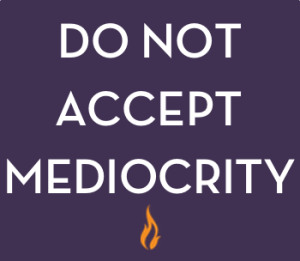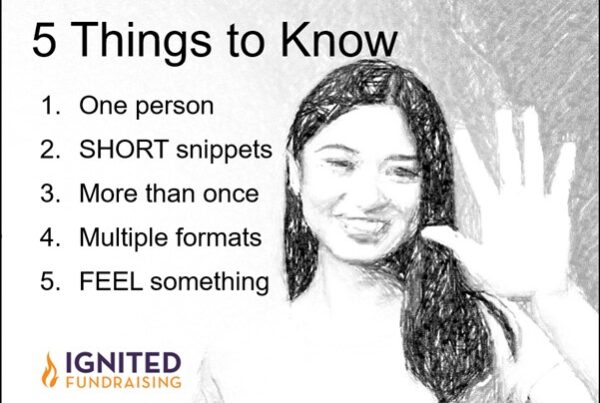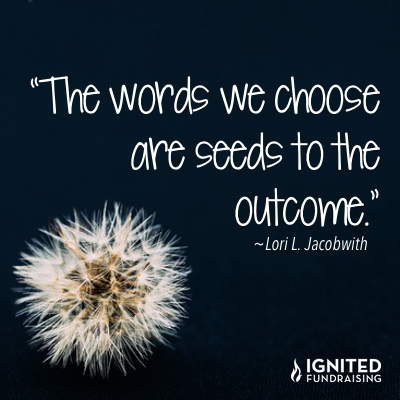My soap box topic these days is: Changing your story.
One of the most powerful ways to change the story of the way people talk about your organization is to focus on your internal communications and accountabilities.

Here’s where mediocrity slithers into the picture.
I watch staff complain about the actions or in-actions of their nonprofit boards. And I observe a similar sort of complaining take place by board members about staff. Most often nothing is done to change the situation. The status quo is maintained even if it’s not effective.
Rather than address the underlying issues, the cycle of complaining and doing nothing gets stronger.
The outcome? A mediocre, un-engaged, ineffective board. Meetings focus less and less on the task at hand: fulfilling the incredible mission of your organization. Meetings and events are spent reviewing financials and talking about how the organization needs more: money, board members, staff, and other resources. The same conversations happen over and over again.
What to do?
There are plenty of articles written on basic nonprofit board responsibilities. So I’ll skip to some of the OTHER things that cause an effective board.
As a board member here are some of your most important duties:
1. Ask questions to interrupt doing things “the way we’ve always done them.” Maybe the way we’ve always done things IS the right or best thing to do, but your job, as a board, is to make sure of that. For more ways to shake things up take a look at 10 Tips for Engaging Your Board in the Free Resources section here on my website.
2. Understand the WHY of your mission and be able to articulate it in your own words. If you don’t know what I’m talking about here. Watch this video about the WHY from Simon Sinek.
3. Answer the 5 Questions Every Board Should Ask, often.
4. Hold each other accountable for attendance, follow-up, participation, financial support, and more.
As staff here are some of your most important duties:
1. Create, in tandem with your board chair, an interesting, thought-provoking, board meeting. Think of your board meeting as a performance, not a “to do” action.
2. Notice when your board is not engaged and take responsibility, with board leadership, to ask and understand why. And then DO something about it.
3. Think of your board members as your most precious and very busy donors. They require being supported and reminded in unique and helpful ways.
And for both staff and board members: Do. Not. Accept. Mediocrity.
Stand for something else. Your mission is awesome. So your board should be awesome. And it should FEEL awesome to be on your board.
Listen for when mediocrity starts to slither into your communication:
“That was better than nothing”
“At least we had a quorum”
“We can’t get good board members”
“Let’s be grateful for what we have”
What would it look like if your board communication changed to:
“That was the best, most effective board meeting I’ve ever attended?”
“I really make a difference as a board member here”
For support and templates to help build an engaged board download the free ebook: Mission Possible – Your Workbook for A Successful Board






